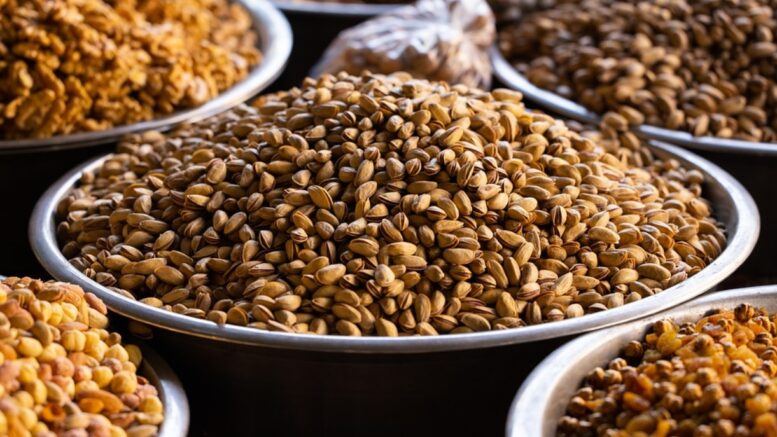Cover crops have become increasingly popular among farmers and gardeners due to the multitude of benefits they offer. These crops, typically planted during periods of activity, play a vital role in enhancing soil health, preventing erosion, controlling weed growth, managing pests, and promoting biodiversity. To fully capitalize on these advantages, it is essential to make the right choices when selecting cover crop seeds. In this blog post, we will delve into insights about cover crop seeds ranging from varieties for specific conditions to understanding effective planting techniques.
Selecting the Appropriate Cover Crop Seeds
When deciding on different cover crop seeds, several factors need consideration, including climate patterns, soil composition, and specific objectives. Here are some popular options catering to different circumstances;
1. Cold Season Cover Crops
- Winter Rye: Exhibits tolerance to the weather while providing biomass. This is very important for a fuller harvest.
- Crimson Clover: Facilitates nitrogen fixation in the soil and aids erosion control. Crimson clover helps in symbiosis.
- Winter Pea: Generates amounts of nitrogen while enhancing soil structure. This is also much required for effective harvest and providing nutrients to plants.
2. Warm Season Cover Crops
- Buckwheat: Buckwheat helps in rapid growth and ensures suppression of weeds. Eventually, this helps to better germination and harvest.
- Sunn Hemp: Contributes to nitrogen fixation, nematode suppression, and organic matter addition.
- Cowpea: Demonstrates drought resistance and proves beneficial for improving soil fertility. The right amount of cowpeas is extremely important for retaining soil fertility through the planting, germination, and harvesting process.
3. Mixed Cover Crops
Different mixtures of cover crops can provide advantages. For instance, combining Hairy Vetch and Cereal Rye helps improve soil health by fixing nitrogen and preventing erosion. On the other hand,, using Radish and Oats together can suppress weeds, add biomass, and break up compacted soils. So, choose different crop mixtures according to your needs.
To effectively plant cover crops, it’s essential to understand the techniques. Here are a few methods to consider when utilizing plant cover crops.
- Broadcasting: Suitable for all areas. Spread the seeds evenly either by hand or with a spreader. Lightly rake the soil after broadcasting to ensure seed-to-soil contact. One needs to perform this step very carefully.
- 2. Drilling: Ideal for dry areas or precise planting. Use a specialized seed drill to place seeds at the desired spacing and depth this provides seed-to-soil contact compared to broadcasting.
- 3. Overseeding: Used when there are existing crops or vegetation. Spread the seeds over the top of existing plants. Timing is crucial to allow cover crops to be established before competition from crops.
Benefits of Cover Crops

As we now know how to effectively plant cover seeds, it’s important to understand its benefits. Cover crop seeds offer several benefits for farmers and gardeners alike. Here are some of the benefits;
1. Improving Soil Health
Adding matter to the soil enhances its structure and fertility.
This helps in Increasing microbial nutrient availability.
On the other hand, it helps in preventing soil erosion by holding the soil in place and reducing runoff.
2. Controlling Weeds
Plant cover seeds compete with weeds for sunlight, water, and nutrients. Some cover crops release substances that hinder weed seed germination. The dense cover created by cover crops shades out weeds.
3. Managing Nutrients
Legume cover crops fix nitrogen, reducing reliance on fertilizers; this further facilitates symbiosis in the soil. Cover crop roots scavenge nutrients, preventing them from leaching into groundwater.
4. Pest and Disease Management
Nematode suppressive cover crops such as marigolds or sunn hemp can decrease pest populations.
Cover crops can disrupt pest and disease cycles by interrupting their life stages.
5. Promoting Biodiversity
Planting cover crop seeds helps in attracting insects, birds, and pollinators to the area. This leads to effective pollination. Further, it helps in creating habitats for organisms like earthworms and spiders.
Conclusion
Using cover crop seeds is a strategy for enhancing soil health, managing pests, controlling erosion, and promoting biodiversity. Farmers and gardeners can optimize the advantages of cover crops by selecting the seeds and employing effective planting methods. Cover crops provide a sustainable solution for enhancing soil structure, suppressing weeds, and improving management. Take the step today by exploring cover crop options, and you’ll soon enjoy the benefits in your garden or on your farm.
